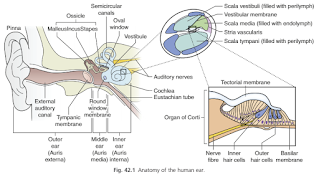Otic Drug Delivery
Introduction
Ear preparations are usually placed in the ear canal by drops in small amounts for
- Removal of excessive cerumen (earwax)
- Treatment of ear infections, inflammation or preparation.
Advantages
- Ability to achieve a local drug concentration much higher than what could be achieved via systemic administration.
- Also minimizing off-target systemic exposure.
Proper Administration
Wash your hands thoroughly with soap and water.
- If the ear drops are a cloudy suspension, shake the bottle well for 10 seconds.
- For convenience, it is probably easier to have someone other than the patient to administer the drops.
When instilled into the ear, to allow the drops to run in deeper, the earlobe should be held up and back.
- For a child younger than 3 years of age, the earlobe should be held gently down and back to open the ear canal.
- Also, remain in position for several minutes and gently press on the small skin flap over the ear to help the drops to run into the ear canal.
When eardrops are prescribed, it is important for the pharmacist to determine how the drops are to be used.
- Earwax removal drops should be instilled and then removed with an ear syringe.
- Drops intended to treat external otitis infection are intended to be instilled and left in the ear for a few minutes.
For antibiotic eardrops, it is not necessary to finish the entire bottle, because therapy could last 20 to 30 days, depending upon the dosage regimen.
- Therefore, patients should be instructed to continue using the drops for 3 days after symptoms disappear.
- Products for otitis externa may take up to 7 to 10 days to demonstrate efficacy.
The use of ototoxic ear drops (e.g. Aminoglycosides including gentamicin and neomycin) should be avoided in patients with perforations of the tympanic membrane.



Comments
Post a Comment